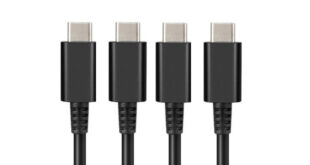Nintendo has caved to the online revolution, and will soon offer simultaneous digital/physical releases. But its download plan could also change the way video games are sold, says Michael French
Too little, too late?
It’s very easy to consider Nintendo’s sudden declaration to ‘significantly expand its digital business’ during its recent – and dire – yearly financials as closing the stable door after the horse has bolted.
Certainly, the company has lost its edge in the games industry as Wii trails away and rival formats of all kinds step up the pressure.
But a new plan for 3DS and Wii U games sees the introduction of day-and-date digital/physical releases for first-party games this summer.
And, crucially, retailers will be proactively involved” according to Nintendo president Satoru Iwata. Involved to the point where this strategy can reshape what many think about distribution, wholesale pricing and retail margins.
NINTENDO’S DIGITAL HIT
Digital sales have been good for Nintendo lately, it might actually surprise you to hear. It certainly sounds like it has surprised Nintendo (despite historically having dabbled in the area regularly).
In Japan two weeks ago, Iwata explained to investors that the number of consumers accessing the internet through 3DS has been on the rise when compared to previous devices. 70 per cent of units sold in the US and Japan have been connected to the web, in Europe 50 per cent. This is the highest ratio among all the handheld video game systems Nintendo has launched,” said Iwata.
The Nintendo eShop, which sells original download games and retro re-releases, is also seeing a sharp upturn in repeat visitors.
So adding boxed games as downloads is a logical step. 3DS’ New Super Mario Bros. 2 will be the first hybrid digital-physical release in August, with other first-party titles to follow.
Nintendo has always insisted that it will only take downloads seriously when it has proof the market is strong. This is that moment.
But when the firm says it is also acting to adapt to changes in the circumstance surrounding the industry and create a new business opportunity,” the rest of us know the other factors: smartphone, browser, online, social. Other formats stole a march on Nintendo the Grand Innovator. Now consumers expect content where they want it, not where a format-holder decides to put it.
SURPRISING SHIFT
Nintendo’s strategy shift to this point is no revolution. It’s simply doing what Sony’s done for years on PS3 and did from day one with Vita.
But there are some surprises in how the format-holder is approaching ways to sell digital content.
Consumers can make the choice,” one of Iwata’s slides at his investor presentation proudly said. While that seems a little trite in an era of Netfix and iTunes, Nintendo has embraced this.
In general, digital distribution of the software available today is mainly aiming at no involvement from retailers,” said Iwata.
On the contrary, Nintendo has decided to choose an approach in which we will ask our retailers to be
proactively involved.
Of course, for all the digital download software, we ultimately need our consumers to download them to their Nintendo 3DS system through the Nintendo eShop. However, when it comes to how our consumers choose the candidates and make the final purchase decision, as well as how they pay for the software, we are going to enable consumers to go through these processes at both retailers and the Nintendo eShop.”
Consumers will be able to buy digital Nintendo games direct through hardware, or obtain 16-digit download codes from retailers. And it’s not just so that consumers have a choice. It’s because many don’t have a choice.
Said Iwata: Some may wonder why we are adding this kind of process, as it may seem more complicated. However, for the majority of our consumers this is a familiar process, as they are already accustomed to making payments at the retail outlets, and it can lower their psychological barrier to making online purchases.
Some consumers are hesitant in purchasing digital download software because they are concerned about inputting their credit card numbers.
Also, payments by credit cards or cell phones are unavailable to some people under a certain age. Accordingly, offering a familiar payment method should lower the hurdle for our consumers to purchase digital download software.”
Plus, letting retailers play a part in downloads helps aid the discovery and promotion of digital games, or just games in general as the physical retail model becomes less prominent.
Said Iwata: One of the biggest hurdles for the expansion of our digital business is the limited methods to expose downloadable products to consumers. This is one of the reasons why we are taking this sort of approach.
If only the consumers who proactively visit the Nintendo eShop are aware of the digital software we deploy, there is no chance that our digital business can drastically expand. For our digital business to grow drastically, it is imperative for us to expand the exposure of the digital download products to potential consumers.”
PROBLEM SOLVING
By taking digital sales and treating them exactly like physical ones, Nintendo thinks it can solve the problems physical distribution faces.
Iwata added: Recently, except for certain software, the lifespans of software in general are increasingly becoming shorter.Even a small excess of inventory can cause a price break of the software at the outlets just shortly after the launch, and retailers are taking a rather cautious attitude in making purchase orders. This situation is simultaneously causing frequent losses of sales opportunity for the software titles that have sold more than the retailers’ original modest expectations.
By asking our retailers to take part in selling our digital products as we propose, they can prevent the losses due to having excess inventory.”
Or having no inventory when something is out of stock.
To help things along, Iwata said that Nintendo will be encouraging point-of-sale-activation for this to reduce and eventually eliminate inventory costs.
Plus, it will ask retailers to decide the price points”.
Pundits and experts might recoil as Nintendo is effectively ignoring all the warnings about going ‘direct to consumer’. But it’s a powerful message for retailers, and far beyond what other companies offer.
In the common digital distribution of today, it is the standard business model where the platform-holder makes direct sales to consumers. However, the distribution channel Nintendo conceives is not the disintermediation type.”
THE PRICE IS RIPE
There are other knock-on changes ahead that follow this approach. Nintendo could drive down the average price of games, or at the very least increase margins for retail.
Said Iwata: If retailers can sell our software without having to shoulder inventory risks, it is natural in fair business transactions that there will be changes in their margins, for which the inventory risks are taken into consideration.”
He added: It is a misunderstanding that the wholesale price of digital software will be identical to that of packaged software. Therefore, the retail price of digital software isn’t necessarily converged with the wholesale price. There are several types of retailer; a retailer that offers products at comparatively high prices but provides good service and is in a convenient location, or a retailer that only focuses on offering products at lower prices than others do. I expect to see sound competition among retailers that take advantage of their strengths as they have done so far. In that sense, I don’t think our proposal on selling dig

 MCV/DEVELOP News, events, research and jobs from the games industry
MCV/DEVELOP News, events, research and jobs from the games industry



